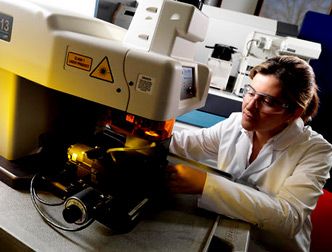New publications
Scientists have learned how to create a map of a person's movements by analyzing their hair
Last reviewed: 01.07.2025

All iLive content is medically reviewed or fact checked to ensure as much factual accuracy as possible.
We have strict sourcing guidelines and only link to reputable media sites, academic research institutions and, whenever possible, medically peer reviewed studies. Note that the numbers in parentheses ([1], [2], etc.) are clickable links to these studies.
If you feel that any of our content is inaccurate, out-of-date, or otherwise questionable, please select it and press Ctrl + Enter.
Scientists have learned to create a clear map of a person's movements by analyzing their hair; the method is based on the fact that the isotopic composition of water is unique for each area and is reflected in the atomic composition of hair when this moisture enters the human body, according to the website of the University of Alaska (UAF, USA).
Even though many people drink bottled water and eat bananas brought from the tropics, hair contains in 100% of cases an isotopic trace of water from places where a person has lived for at least a few days, the report says.
Hair retains chemical traces of all substances that enter the human body, including those that enter with food and drinks consumed as food. Due to this, based on the results of isotope analysis, it is possible to create a map of a person's movements over the past few years, with reference to those bodies of water near which he lived for at least a week. Water that enters the human body every day has a completely unique "hydrogen trace", which is confined to the geographic location. The atomic or isotopic composition of water is preserved at any level of purification and filtration.
"When a person starts eating differently or drinking different water, the isotopic composition of the hair changes," says Michelle Chartrand, the author of the method and an employee of the University of Ottawa, whose words are quoted in this report.

Chartrand collected over 500 hair samples from people living in different regions of Canada over 4 years. And she compiled an "isotope map" of the country based on the results of various laboratory analyses, which will help the police in investigating various types of crimes. As an experiment, she also reconstructed the movements of a woman for a murder investigation 43 months before her death. Isotope analysis of this woman's hair compared to the data in the map compiled by Chartrand revealed that the woman had moved 7 times during this period, and the time of the move was determined with an accuracy of one month.
The period of time for which a person's movements can be tracked depends, firstly, on the length of the hair (the shorter it is cut, the closer the "horizon" of the past into which scientists can look). In addition, the speed of its growth is also important (on average, hair on the head grows 1-1.5 cm per month). As Chartrand explained, for isotope analysis, a strand of hair is cut into identical pieces, for example, one centimeter each - by analyzing the chemical composition of the hair over equal periods of time, it is not so difficult to track its changes.
There are three hydrogen isotopes in natural reservoirs: protium, with an atomic mass of about 1, deuterium (about 2), and radioactive tritium (mass of about 3). This hydrogen is part of almost all organic substances and is present in various living cells, where hydrogen accounts for almost 50% of the total number of atoms. The most unique isotopic composition allows us to track "where a particular liquid sample comes from".

 [
[